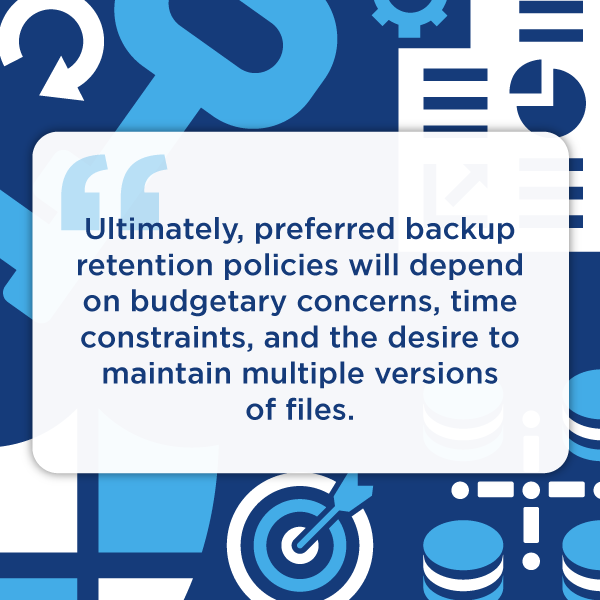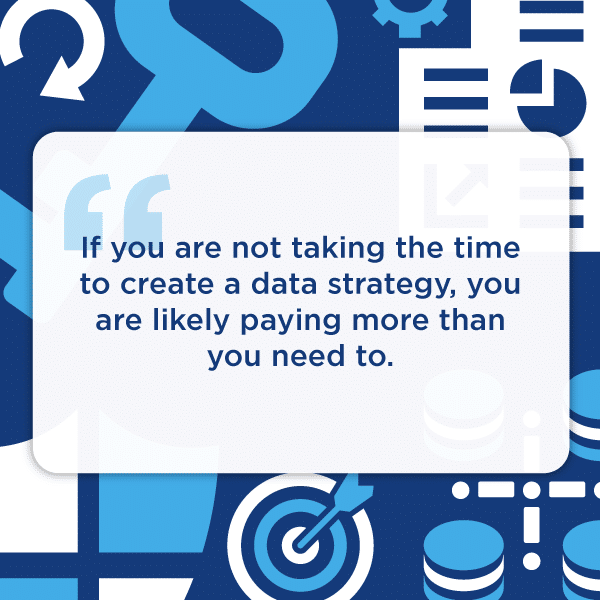Corporate Data Backup vs Archiving: Why It’s Important to Know the Difference & When to Employ Them
In an age of seemingly constant malware and ransomware attacks, it’s necessary to maintain a plan B. In most cases, corporate data backup is capable of providing the relief that compromised businesses require. But while reliable backup systems provide significant value in a threat-prone business environment, they can be far more limited in scope than many realize.

Often businesses and individuals depend on corporate data backup to fulfill functions well beyond its actual scope. Such an approach can prove needlessly costly. Especially common: relying on your backup infrastructure to act as a long-term archive. In reality, data archiving is a completely separate practice that calls for a radically different approach. Below, we highlight key differences between backup vs archiving — knowing the difference can drive significant savings for your business.
What is Corporate Data Backup?
Information stored in data backup solutions should consist of a current or near-current copy of the original data.
The goal?
To perform a full restore in the event of damage or a complete loss. Several types of enterprise data backups exist, each with its own distinct advantages and downsides.
1. Full Backup
As its name suggests, a full solution involves a comprehensive data backup covering the entire data set. Subsequent backups will also include the data in its entirety. These thorough backups can provide considerable peace of mind in the event of breach or some other calamity—but they often prove costly and time-intensive. Hence, many organizations rely on full backups purely as supplemental to an alternative backup strategy. Some businesses conduct full backups initially, to be followed by incremental or differential backups in the future.
2. Incremental Backup
Under an incremental approach, only the files that have changed since the most recent backup are backed up again. The goal: to reduce time between backups, thereby minimizing the volume of data that requires data backup.
3. Differential Backup
Similar in many respects to incremental backup, differential purely backs up files that have changed since the last full backup, versus those changed after backups of any kind. These types of data backup can be managed by a third-party service provider through a backup-as-a-service model.

Ultimately, preferred backup retention policies will depend on budgetary concerns, time constraints, and the desire to maintain multiple versions of files. Such preferences should not depend, however, on the desire to use backup systems for archival purposes.
What is Data Archiving?
Data archiving solutions provide an accurate reference indicating how data looked and the function it served at a specific point in time. Typically, the original version is deleted from the ‘active’ data after an archive has been created.
Unlike a backup, the archive is not meant to serve as a replacement in the event of a loss. Rather, it forms a record to be examined when specific information is required.
For example, a data archive may include a copy of a contract a customer or client signed months or even years ago. This contract can be quickly pulled up for reference. Several examples of types of data stored in archives include:
- Emails needed for discovery purposes in lawsuits
- Patient Records for HIPAA, financial or other compliance requirements
- Old CAD drawings
- Sales orders
- Social media records
- Tax records
- Personnel records, typically for human resources
- Historical fiscal year data
[Looking for timely, secure, and scalable backups? Learn how Backup as a Service can help achieve that.]
Backup vs Archive: How Knowing the Differences Can Save You Money
Despite their considerable differences, data backup vs archive is commonly confused. Often organizations rely on full data backups to act as impromptu archival systems. It’s common for organizations to retain backups for months or years. Unfortunately, given the significant bandwidth and hardware costs required for implementing and maintaining full backups, this approach can prove needlessly expensive.
Each industry has data retention needs but with shrinking budgets, now is the time for IT to take notice of the options. Here are two scenarios to consider:
1. Retaining Records
You may have older data you want to retain for corporate records that isn’t regulated information. Can you leverage a less expensive cloud archive option to free up space on your expensive internal data backup?
2. Complying with Regulations
Alternatively, you may have older data that has security or regulatory requirements; for this data you will need certain security and auto retention rules. Do you have someone ensuring your regulatory needs are being met with backups? If not, it may be easier to look to a cloud archiving provider such as ComportSecure to ensure security, retention and retrieval in the event of an outage. After all, avoiding a hefty fine for non-compliance is always in the win column.
There are bandwidth, hardware and information category decisions that should be looked at when you are making determinations for your data storage. If you are not taking the time to create a data strategy, you are likely paying more than you need to. This may have been fine in the past when data wasn’t expanding exponentially but today, unchecked data can lead to astronomical expenses.
 Beware of Time Consuming Data Availability
Beware of Time Consuming Data Availability
Beyond sheer bandwidth needs and expenses, costs incurred through backup and archival may also cause efficiency and accuracy issues. Archived data needs to be instantly accessible—but even the most efficient backup methods may necessitate a significant time investment before critical data can be accessed.
Even worse, data stored in backups may not be available in the form in which it is desired. While archived data remains static over the course of several years, backed up data may be periodically altered or overwritten.
Scenario: Deciding Between Backup vs Archive to Store 3 Decades of Data
Let’s look at a real life situation. Your company manufactures, installs and maintains an oil pipeline. You are required to document the entire process, including external and x-ray images of every weld made in the product for the life of the product (which might be 30 years).
Once this data is created, it will never change. Additionally, although some data can be compressed and/or deduplicated, neither of these techniques really decreases the size of the images. Your corporate policy is a full backup monthly with an incremental or differential weekly.
What are the practical implications of this type of plan?
- Multiple copies. You just potentially committed to keeping multiple copies (based on deletion policy, possibly 30 years worth) of your backups long term, with the great majority of that data probably not being needed (it has changed or become unnecessary)
- Tiered storage. By storing the backups on expensive Tier 0 or Tier 1 storage, you have increased your costs to dollars per gigabyte instead of tens of cents per gigabyte.
- Data migration. In all probability, you will be replacing your primary storage with newer hardware. This results in a massive data migration, which is neither easy, fast nor inexpensive. If you are using a cloud provider, they will take care of that.
- Backup time. You have probably increased the amount of time it takes to perform your backup to the point where your backup may take longer than your backup window.
- Deduplicate data. You are performing incrementals or differentials to shorten your backup times. Why spend time during the full backup copying data that you already know hasn’t and won’t change?
- Data recovery time. If, in fact, you do need to restore your environment from the backup, you have probably significantly increased your recovery time.
- Data retrieval. Based on your backup technique, it may actually take longer to retrieve data from a backup compared to an archive.
- Data security. And if you separate your archived data from your active data, you may have actually protected the data from intruders.
How you perceive backup and archiving may determine the extent of your investment in each data storage option.
The inherent differences of data backup and archiving call for tailored approaches that properly address each organization’s unique needs. One approach should not be substituted for the other. Rather, these different processes can be performed in conjunction to maximize accuracy and efficiency while keeping related costs to a minimum. Learn ways to optimize your data strategy with Comport’s Data Storage Assessment. Our 30+ years of technology solutions expertise is put to work for your company to determine the best ways to manage data.
[Learn how enterprise storage solutions can add scalability, achieve 100% availability, and optimize costs.]





























